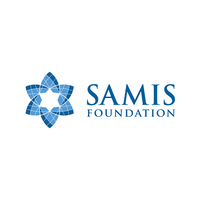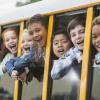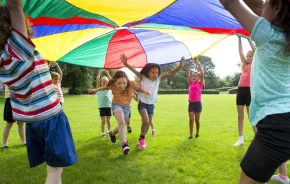Editor's note: This article was sponsored by the Samis Foundation. The Samis Foundation supports K–12 Jewish education in Washington state and initiatives in Israel.
When Gov. Inslee’s March 12 announcement prompted school closures across Washington state, local Jewish day schools were already prepared for distance learning. By that day, Seattle Jewish Community School (SJCS), along with other Jewish day schools in the Seattle area, had soft-launched their remote learning program, seeking feedback from students, parents and teachers and getting everyone up to speed.
“It was like I had hired 12 brand new teachers despite the decades of seniority and experience they had,” says Head of School Ron Waldman. “In this format, all bets are off. None of our educators had ever been trained for this type of teaching and learning, and not all children can easily adapt to continuous learning.” Even though they’ve had their challenges, Seattle Jewish Community School — along with Northwest Yeshiva High School (NYHS), Jewish Day School of Metropolitan Seattle (JDS) and Seattle Hebrew Academy (SHA) — are making it work, teaching students important lessons and forging strong communities at the same time.

The schools, which already participated in a tech cohort Community of Practice led by Dr. David Wicks, Seattle Pacific University’s chair of Digital Education Leadership, also made sure they had the right tools to conduct classes, including Zoom, Edpuzzle, Google Meet, Kahoot!, Camtasia, Screencast-O-Matic and Seesaw. Since traditional teaching won’t work on these platforms, NYHS Head of School Jason Feld says they’ve encouraged teachers to come up with exciting new methods. “The charge to the faculty was to be brave in experimentation and to really let learning objectives drive the technology, not the other way around.” Teachers at NYHS have drawn on what they learned during Seattle’s 2019 “Snowmaggedon,” such as using flipped instruction, a blended learning strategy that allows the students to see the material before the class and then dive deeply into it with their classmates during school hours. “That experience really did serve us quite well in preparation for this year,” says Feld.
As schools try out different modalities for remote learning, they are discovering the value of using a variety of formats, including full class groups, small groups and individualized meetings, as well as instructional goal reassessment. “Beyond the objectives of getting through a syllabus and finals, we are finding that instruction has become learner-centric, with students increasingly driving their learning and building community in a more thoughtful and intentionally deeper way. This has really been the silver lining of distance learning,” says Feld.
SHA Head of School Rivy Poupko Kletenik emphasizes that learning is the focus, but community building and engagement are vital as well. SHA has organized a drive-by food drive and held virtual events for Jewish holidays and days of remembrance. Each of the schools is engaging with people inside and outside of their school community by hosting open virtual classes, celebrations and commemorations.
“Our Jewish day school partners have been doing an incredible job making sure students stay connected and continue receiving exemplary academic instruction in these unprecedented times,” says Connie Kanter, CEO of the Samis Foundation, an organization that provides grants to support K–12 Jewish education in Washington state and initiatives in Israel. Samis supports scholarships, tech education, special needs and professional development for seven Jewish day schools in the Seattle area. The foundation has put a particular emphasis on supporting the schools’ technology needs for the past decade. “We hope other educators in the public and private sectors can benefit from our schools’ models.”
While schools and families are taking this tough situation one day at a time, 10 years from now, some are optimistic that students will look back at this moment with reflection. “I hope that they will remember this as a time of personal growth, and as a time where a lot of what we talk about in our day-to-day learning of grit, resilience, kindness and community was tested in a real way during this crisis,” says Feld. “My hope is that instead of feeling isolated, they will have some meaningful memories.”
|
Sponsored by: |
|
|










